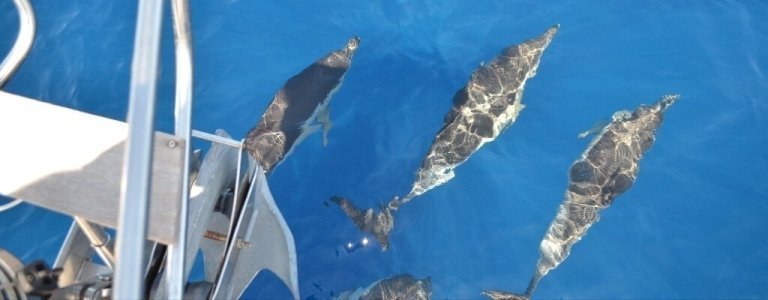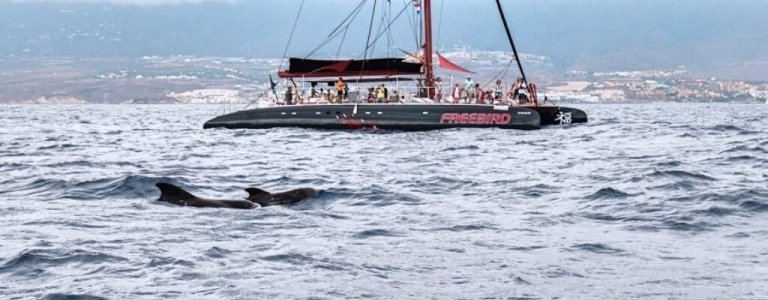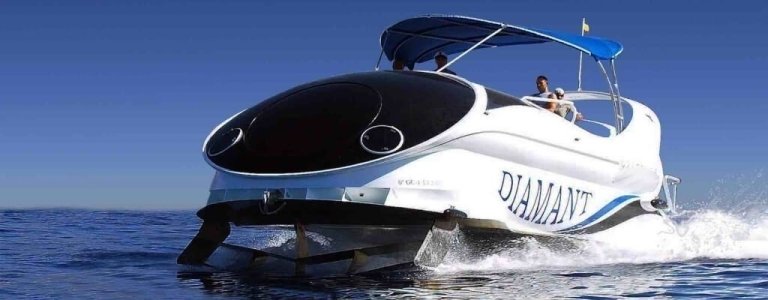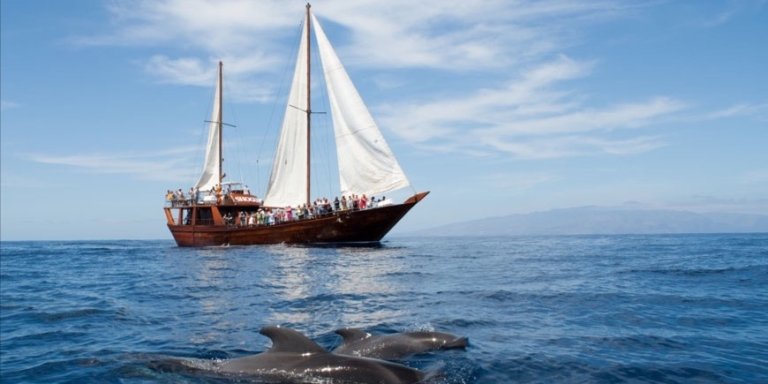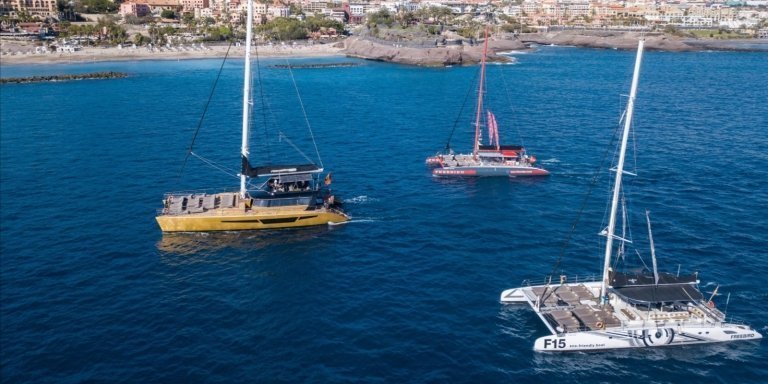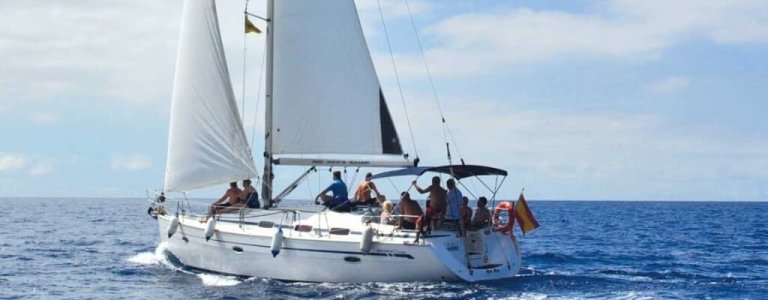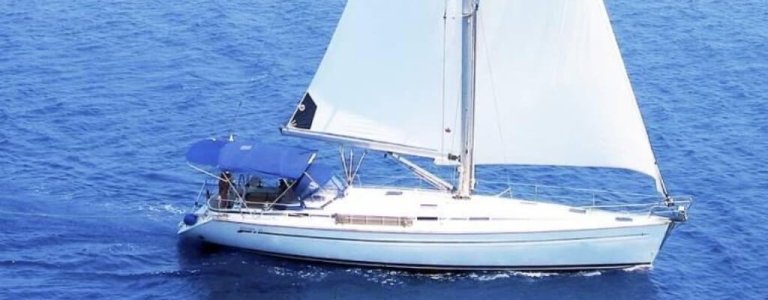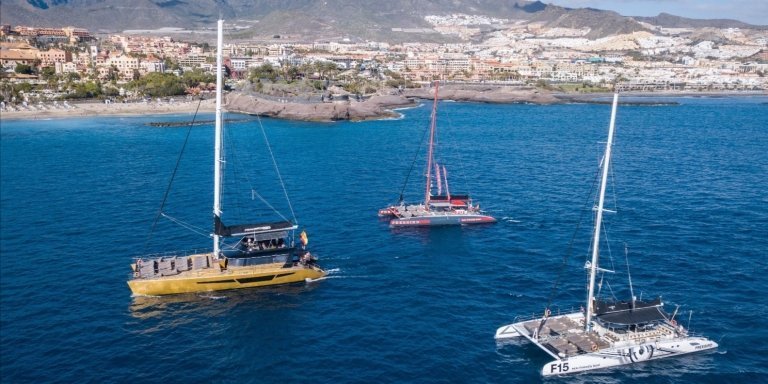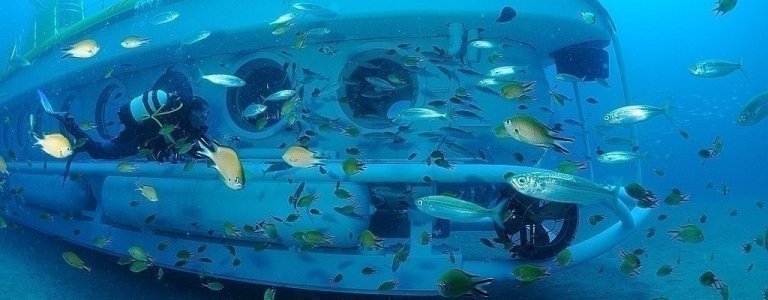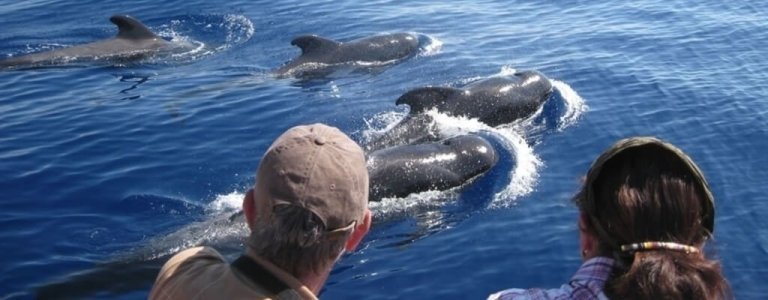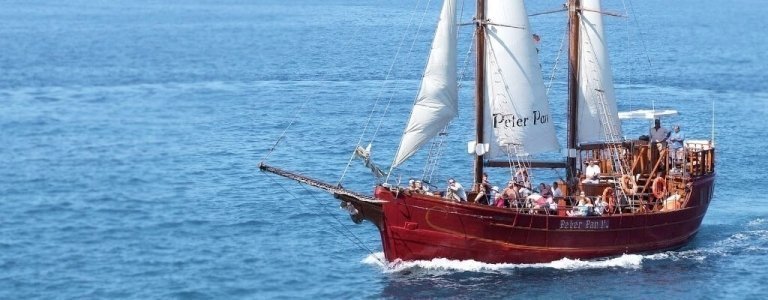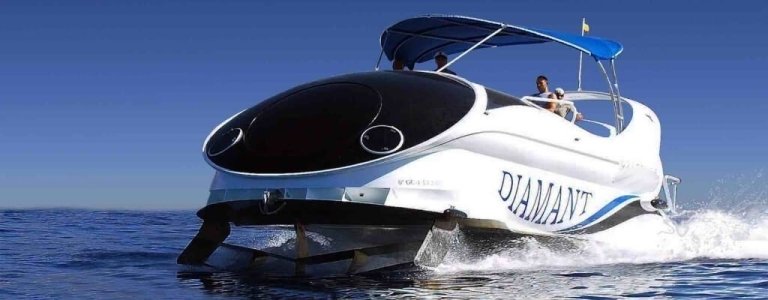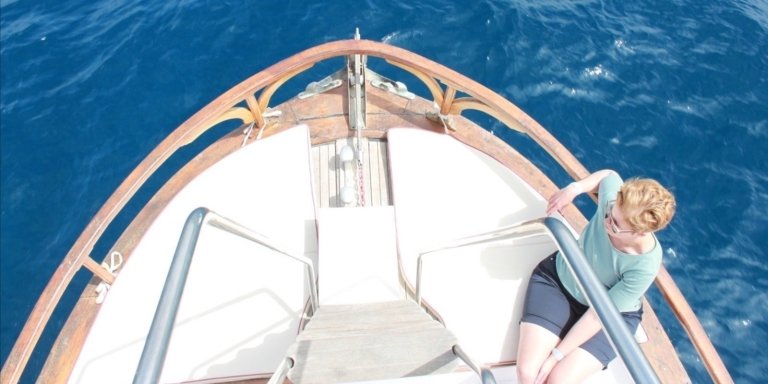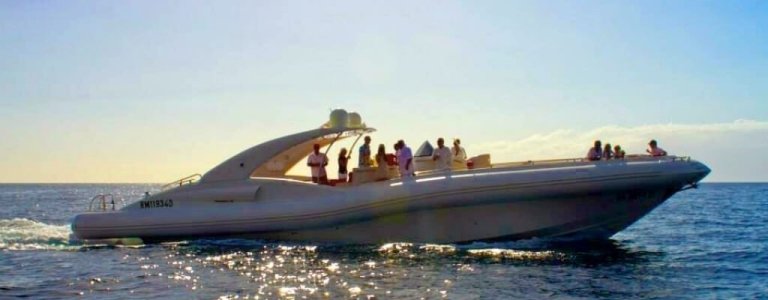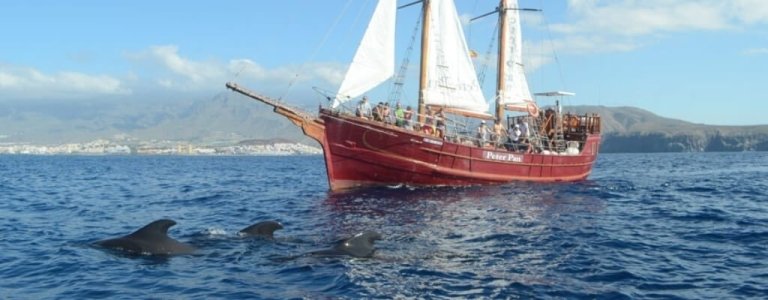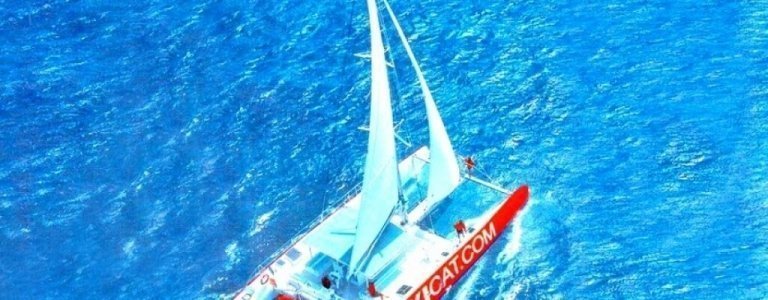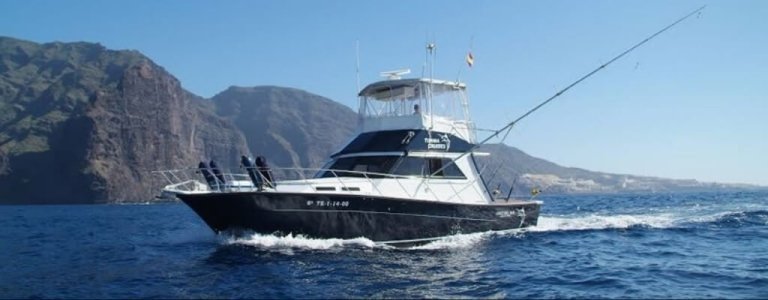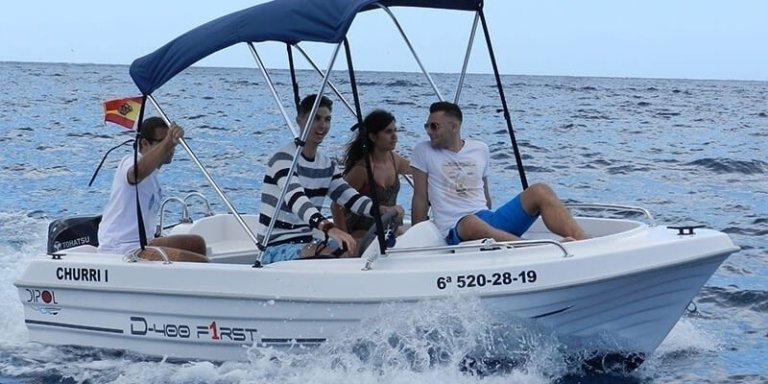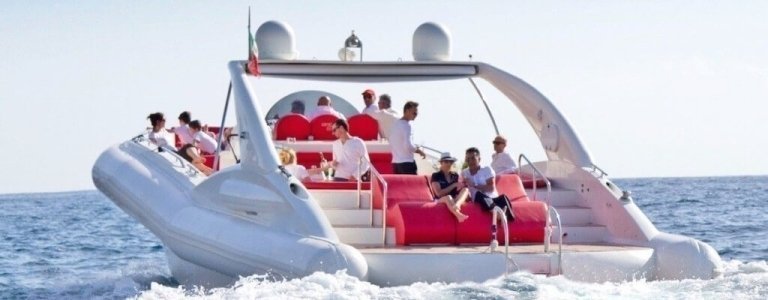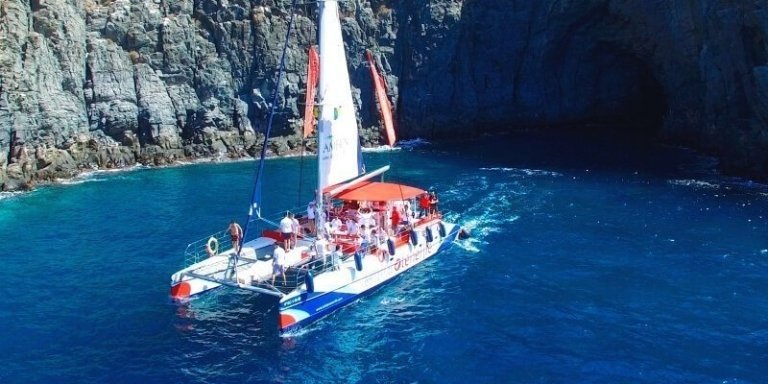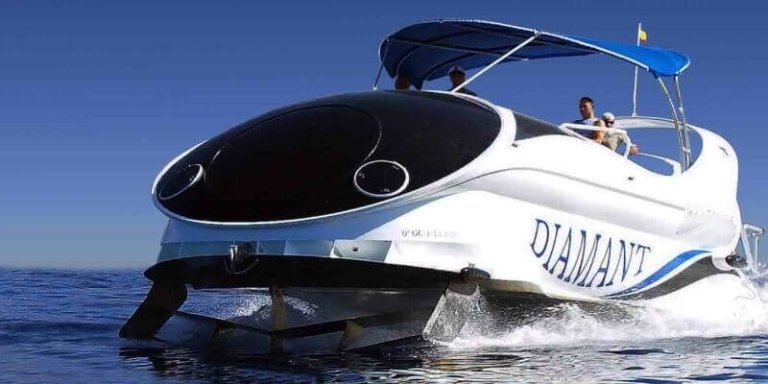Frequently Asked Questions
What are the best boat trips in Tenerife?
The best boat trips in Tenerife include:
- Tours to Los Gigantes cliffs
- Whale watching excursions
- Sailing boat charters
- Private boat charters
You can also enjoy a boat party. Or a 3-hour boat trip to explore the best places in Tenerife.
How long is a typical boat trip in Tenerife?
The duration of a boat trip in Tenerife can vary. Some boat trips may last for 3 hours. While others can be full-day excursions. It depends on the specific tour or charter you choose.
Where can I book a boat tour or cruise in Tenerife?
You can book a boat tour or cruise in Tenerife through TripsPoint.
We are trusted online platform for booking travel experiences. We offer a wide range of boat trips and charters to choose from.
What is Los Gigantes?
Los Gigantes is an iconic landmark in Tenerife. The highest cliffs of Atlantic Ocean. They rise up to 800 meters from the sea. Many boat trips in Tenerife offer tours to Los Gigantes.
Can I go whale watching on a boat trip in Tenerife?
Yes, whale watching is a popular activity on boat trips in Tenerife.
The waters around the island are home to several species of whales. You can have the chance to spot them during your excursion.
What is a sailing boat charter in Tenerife?
A sailing boat charter in Tenerife allows you to rent a sailboat with a skipper for a specified period.
Can I charter a private boat in Tenerife?
Yes, you can charter a private boat in Tenerife. Private boat charters offer exclusivity and the opportunity to tailor the trip according to your preferences.
It's a great option for special occasions or a more intimate experience.
What is Masca Bay?
Masca Bay is a picturesque beach located under Los Gigantes cliffs (The Giants). It's part ofthe Teno Mountains of Tenerife. It is surrounded by stunning natural scenery. It is often included as a stop in boat trips or hiking excursions.
Are there any beaches included in boat trips in Tenerife?
Yes, some boat trips in Tenerife include visits to beautiful beaches. Usually these beaches hardly accessible from land. There you can relax, swim, or snorkel. The availability of beach stops may vary. It is depending on the specific tour or charter.
What is a boat party in Tenerife?
A boat party in Tenerife is a unique experience where you can party and have fun onboard a boat. It usually includes music, drinks, and a lively atmosphere to enjoy with friends or other participants.
Is it possible to experience a boat trip from Costa Adeje?
Yes, it is possible to experience a boat trip from Costa Adeje. Many boat trips and charters depart from Puerto Colón in Costa Adeje. It is easily accessible from the most resorts in the area.
Top Quality Boat Trips Tenerife offers at TripsPoint
Are you planning a trip to Tenerife? Looking for the best boat trips to make your holiday memorable?
At TripsPoint, we offer a wide range of boat tours and cruises. You'll find the one to all your needs and preferences. Our boat trips in Tenerife are tailored to provide you with the best experience on the island. Relax on a luxury catamaran. Explore the breathtaking coastline, or go whale and dolphin watching. We have a trip for everyone.
- One of our most popular boat trips is the Tenerife luxury catamaran cruise. It takes you around the stunning beaches of Costa Adeje. On this tour, you will have the time to swim and snorkel in crystal-clear waters. Enjoy onboard lunch, and sip on refreshing drinks while taking in the beautiful views.
- Looking for a more adventurous experience? We offer a thrilling speedboat tour along the coast. Feel the adrenaline rush as you speed through the waves and explore hidden caves and cliffs. This tour is perfect for adrenaline junkies and nature lovers alike.
- If you're interested in wildlife, our whale and dolphin watching tours are a must-do in Tenerife. Head out to sea and witness these magnificent creatures in their natural habitat. Our marine guides will provide you with fascinating information about these marine animals.
- For a unique experience, we also offer a sunset cruise. You can watch the sun go down over the horizon while enjoying live music. And a glass of champagne. Or a bottle of wine :) This is the perfect way to end your day in Tenerife.
At TripsPoint, we prioritize safety, comfort, and customer satisfaction. Our boat trips are led by experienced captains and professional crews. They are committed to provide you with the best service. To ensure your safety throughout the journey.
Don't miss out on the opportunity to make your trip to Tenerife vivid and memorable. Book your boat trip with TripsPoint today and create memories that will last a lifetime.
Your Benefits of Booking Tenerife Boat Trips at TripsPoint
Book a boat trip with TripsPoint and can enjoy benefits that enhance your overall experience. Our boat trips in Tenerife provide a unique experiences. Explore the stunning coastlines. Observe the incredible marine life. Take yourself in the natural beauty of the Canary Islands. Interested in whale and dolphin watching, snorkeling? Or looking for a relaxing day at sea? We have the perfect boat tour for you.
General Information About Boat Trips Tenerife offers.
From scenic boat tours and exciting excursions to private charters. There is something for you in Tenerife.
Boat trips in Tenerife are a popular activity for tourists and locals alike. There are various types of boat trips available. Fit your interests and preferences. Here is some general information about boat trips in Tenerife:
- Scenic Boat Tours. These tours offer a leisurely cruise along the beautiful coastline of Tenerife. You can enjoy stunning views of the cliffs, beaches, and volcanic formations. Most tours include stops for swimming and snorkeling.
- Whale and Dolphin Watching. Tenerife is one of the best places in Europe for whale and dolphin watching. Many boat trips offer the time to see these magnificent creatures. And quite close, in their natural habitat. Our guides provide information about the species you encounter during the trip.
- Fishing Excursions. For fishing lovers, Tenerife offers fishing excursions. You can try your hand at catching a variety of fish. These trips guided by expert fishermen. They provide all the necessary equipment and expertise.
- Luxury Yacht Charters. Do you prefer a more exclusive and private experience? Opt for a private yacht charter. These charters offer the chance to explore the waters surrounding Tenerife at your own pace. Tailor the itinerary to your preferences. Enjoy amenities like onboard dining and swimming.
- Sunset Cruises. Enjoy the breathtaking sunset views over the Atlantic Ocean on a sunset cruise. Sunset trips include a romantic atmosphere. Enjoy music, and a glass of champagne to toast the setting sun.
- Catamaran Excursions. Catamaran trips are a popular choice for families and larger groups. These spacious boats offer a comfortable and stable ride. It's ideal for those who may be prone to seasickness. Catamaran excursions include onboard amusement, food, and drinks.
- Speedboat Adventures. If you crave a thrill and adrenaline rush, speedboat adventures are a great option. Speed boat trips take you on a high-speed journey along the coastline. And providing a cheering experience and fantastic views.
It is recommended to book our boat trips in advance. Especially during peak tourism seasons, as they can be in high demand.
Prices for boat trips in Tenerife vary. Pricing depending on the type of trip, duration, and additional services included. It is important to consider the safety measures and certifications. All boats on TripsPoint provides the highest level of safety. Each one is licensed and legal boat trip provider. That's guarantee your safety before and after the booking.
Why Choose a Boat Trip in Tenerife?
A boat trip in Tenerife is a must-do to make the most of your vacation. It allows you to explore the island from a different perspective. Get away from the crowded tourist areas. Sail along the coast. Enjoying breathtaking views of the Atlantic Ocean. And explore the natural habitats of whales and dolphins.
Types of Boat Trips, Whale and Dolphin Watching on Boat Tours and Charters
Boat Tours
Boat tours in Tenerife provide an excellent choice to discover the island's highlights from the sea. Admire the stunning cliffs of Los Gigantes. Visit secluded beaches, and explore hidden caves.
Excursions
Boat excursions in Tenerife offer an active experience. Go snorkeling, diving, or fishing. Explore the diverse marine life that inhabits the waters around the island.
Private Charters
Looking for a more exclusive experience? Book a private charter. This allows you to have a personalized itinerary. Enjoy the boat trip with your family and friends.
Popular Boat Trip Destinations in Tenerife. Costa Adeje, Tenerife other marinas
-
Costa Adeje (Puerto Colón)
Costa Adeje marina located in the south of Tenerife. It is one of the most popular destinations for boat trips. Its marina, Puerto Colón, is a starting point for many boat tours. TripsPoint offers a wide range of activities and experiences going from Puerto Colon.
-
Port of Los Gigantes
Los Gigantes is famous for its spectacular cliffs that rise above the crystal-clear waters. Take a boat trip from Los Gigantes. It allows you to admire these natural wonders up close to the highest cliffs of the Atlantic. See dolphins, pilot whales and even go swimming or snorkeling in the area.
-
Port of Los Cristianos
Los Cristianos is another popular place for boat trips in Tenerife. It offers a vibrant atmosphere, beautiful beaches. And a variety of water activities like kayaking. Boat trips from Los Cristianos starting every single day.
Activities the Best Tenerife boat excursions, Catamarans & Sail Yachts
There is a lot to do on our best boat excursions, catamarans, and sail yachts. Take photos of the stunning beauty of the island's coastline. Learn about marine life. Enjoy various activities on board. These boat excursions offer a truly magical experience. You won't soon forget.
Dolphin and Whale Watching
Tenerife is home to a wide variety of marine species. Including majestic whales and playful dolphins. A boat trip in Tenerife gives you the time to observe these magnificent creatures. Purely in their natural habitat.
There are several popular locations for dolphin and whale watching in Tenerife. Mainly Los Gigantes, Puerto Colon (in Costa Adeje) and Los Cristianos. These areas have a high concentration of marine life. Because of the abundance of food and shelter available.
During a boat trip, you can expect to see various species of dolphins in Tenerife. Including bottlenose dolphins, short-finned pilot whales, and Risso's dolphins. Playful and intelligent mammals swim alongside boats. You have a close-up view of their sleek bodies and acrobatic moves. It's not uncommon to witness dolphins leaping out of the water. Or riding the bow waves created by the boat.
Whales are another highlight of these excursions. Tenerife is home to permanent populations of several whale species. Such as Bryde's whales, sperm whales, and fin whales. These gentle giants can grow up to 18 meters long. An awe-inspiring sight to behold. Watch a whale gracefully floating on the surface. Listen whales sounds. It's a remarkable experience that you won't forget.
On the boat trip, our guides will provide you with interesting facts. Learn about the different species you encounter. They will emphasize the importance of responsible whale and dolphin watching. Ensuring that these animals are not disturbed or harmed. Respect for their natural habitat and behavior is paramount.
If you're lucky, you may witness other marine animals during your excursion. For example sea turtles, flying fish, or even sharks. The waters surrounding Tenerife are teeming with diverse marine life. It makes each trip a unique and exciting adventure.
Remember to bring your camera to capture these incredible moments. Many boats offer opportunities for underwater photography. That allows you to get a glimpse of the marine world beneath the surface. Closer encounters with the dolphins and whales might also be possible. Especially through snorkeling or diving excursions.
Dolphin and whale watching in Tenerife provides wonderful moments. Connect with nature and appreciate the beauty of these marine creatures. It's an experience that will leave you with lasting memories. And a greater appreciation for the importance of marine conservation.
Sailing and Yacht Charters in Tenerife.
For a more luxurious experience, indulge in a sailing trip or charter a private yacht. Enjoy the tranquility of the open sea and the breathtaking views of the coast.
There are several options for sailing and yacht charters in Tenerife. You can choose from half-day or full-day sailing trips, sunset cruises, or even longer excursions.
Sailing trips allow you to enjoy the calmness of the ocean. And the beauty of Tenerife's coastline. You can relax on the deck, soak up the sun, and admire the stunning cliffs, beaches, and volcanic landscapes.
Want to explore hidden coves, visit secluded beaches? Or simply enjoy the luxury of being alone onboard? A private yacht charter is a great choice.
Choose a sailing trip or yacht charter in Tenerife. Make sure to consider the size of the vessel. The crew's expertise, and the included amenities such as food and drinks serves you. Prices may vary depending on the duration of the trip. As well as on the size and type of the yacht. And any additional services or activities may rise the cost.
Overall, sailing and yacht charters in Tenerife offer a superb experience. Allowing you to explore the stunning coastline. To enjoy the peacefulness of the open sea. Are you celebrating a special occasion? Or simply want to treat yourself? A sailing trip or yacht charter is a fantastic choice.
Los Gigantes Cliff and Masca Bay Boat Tours
A boat trip to the cliffs of Los Gigantes and Masca Bay is a must-do visiting Tenerife.
The Los Gigantes cliffs are one of the most iconic landmarks on the island of Tenerife. These vertical walls of rock rise up to 600-800 meters from the sea. Cliffs create a breathtaking spectacle. Take a boat tour to explore the cliffs. It lets you to get up close with this magnificent natural wonder.
During the boat tour, passengers can admire the sheer size and beauty of the cliffs. Enjoy panoramic views of the surrounding coastline. The boat will navigate through the crystal waters. Do a breathtaking photos and swim under the cliffs.
After exploring the cliffs, the boat will head towards the nearby beach of Masca. Once the boat reaches Masca Bay, passengers have the option to swim and snorkel.
For those who prefer to stay onboard, the boat will anchor in the Masca Bay. Take a dip in the blue waters. Or relax and enjoy the stunning surroundings. A boat trip to the Los Gigantes cliffs and Masca Bay is a must-do experience. It combines natural beauty, adventure, and relaxation. This boat tour offers a unique perspective of Tenerife's mesmerizing landscapes.
Boat Parties in Tenerife
Tenerife without a doubt known for its lively boat parties. Dance to the rhythm of the music, enjoy refreshing drinks. Make good memories with your friends.
Boat parties in Tenerife are a popular choice for both tourists and locals alike. These parties the beauty of the island's coastline with a fun-filled party atmosphere.
There are various boat party options available in Tenerife.
Some parties are more laid-back, with chill-out music and a relaxed vibe. While others are high-energy events with live DJs, vibrant dance floors, and party games.
Most boat parties depart from Playa de las Americas or Los Cristianos. And cruise along the stunning Tenerife coastline. As you sail, you create a picturesque backdrop for your party experience.
On board, you can expect a range of amenities and activities. Dance the day away on the spacious dance floors. Grab a drink from the open bar. Taste delicious food from the on-board catering. Some boat parties also offer water activities. Such as swimming stops or snorkeling.
The music played at boat parties in Tenerife is diverse. It's catering to different genres and styles. You can expect a mix of popular hits, dance anthems. A classic party tunes that will keep the energy high throughout the event.
The social aspect of boat parties is another highlight. These parties are a great moment to meet new people. Make friends from around the world, and create lasting memories together. Traveling as a couple, with friends, or solo? You'll find a vibrant and friendly atmosphere on board.
It's worth noting that boat parties in Tenerife are ticketed events. It's advisable to book in advance to secure your spot. Prices can vary depending on different things. Like duration of the party, the inclusions, and the fame of the event.
Boat parties in Tenerife offer a unique and vivid party experience.
Are you a party lover or simply looking for a fun day out with friends? These parties provide an exciting and enjoyable option to have a fun in Tenerife.
Factors to Consider when Choosing a Best Boat Trips in Tenerife
-
Boat Excursions Duration
Consider duration of boat trip. How much time you have available for the boat trip? Tenerife offers boat trips ranging from an hour to full-day excursions.
-
Choosing a Boat Type
Decide whether you prefer a catamaran, a sailing boat, or a yacht. Each type of boat offers a different experience on the water.
Decide on the type of boat for a memorable boat trip in Tenerife. It is important to consider the experiences each option offers on the water. A catamaran provides stability, spaciousness, and comfort. It makes it an excellent choice for larger groups or families with children. The wide deck area allows for panoramic views of the stunning coastline. Plenty of space for relaxation and socializing.
On the other hand, a sailing boat brings a sense of adventure. And closer proximity to the turquoise waters. Feel the thrill of the wind in your hair as you navigate the ocean. Experience the serenity that comes from harnessing the power of nature.
For those seeking a more luxury experience, a yacht is the perfect choice. Equipped with amenities and expert crew members, a yacht gives a premium level of comfort. Enjoy the privacy on the deck. Dine on gourmet cuisine. Get the ultimate luxury of cruising the waters of Tenerife.
Do you prefer the stability and space of a catamaran? Or the thrill of sailing? Or the opulence of a yacht? Each boat type presents its own unique charm and experience on the water.
-
Your Group Size
Consider the size of your group when choosing a boat trip. Some trips are better suited for smaller groups. Others can accommodate larger parties.
-
The Right Price for Boat Trips in Tenerife
Take into account your budget when selecting a boat trip. Tenerife offers options for every price range. So you can find something that suits your needs.
Popular Boat Trips in Tenerife. From Catamaran Cruises to Private Boat Rental.
3 Hours Freebird Catamaran Tenerife Whale and Dolphin Watching
Take a 3 hour boat trip adventure aboard the Freebird Catamaran. Witness the breathtaking beauty of whales and dolphins in their natural habitat.
This journey is undoubtedly one of the best ways to explore the coast of Tenerife. Create memorable memories. The Freebird Catamaran offers you the possibility of a great trip. This is the most popular boat in Tenerife.
It allows you to get up close and personal with these magnificent creatures. We mean whales and dolphins. Sail along the west coast of Tenerife. You will be mesmerized by the stunning landscapes. The 3-hour trip is the perfect length. It lets you ample time to see whales and dolphins. While still leaving you with plenty of time to enjoy other activities in Tenerife.
The Freebird Catamaran takes you on a remarkable journey towards La Gomera. To observe these incredible marine animals in their natural environment. The amazing crew onboard makes sure that you have a safe and enjoyable trip. The beautiful boat itself adds to the overall charm of the excursion. It offers a comfortable setting for you to relax and appreciate surroundings.
If you are staying in Costa Adeje, this trip is easily accessible. The Freebird Catamaran departs from Costa Adeje, Tenerife. A boat trip along the south coast of Tenerife is a must-do for any who visits the island. The Freebird Catamaran is regarded as one of the best Tenerife cruises available. As you sail along the coast, you will have the opportunity to see whales and dolphins up close. Marvel at their grace and beauty.
One of the highlights of this journey is the relaxing boat trip itself. Set sail on the Freebird Catamaran. Simply sit back, unwind, and soak in the breathtaking views. The gentle rocking of the boat and the warm sea breeze create a peaceful atmosphere.
The 3 Hours Freebird Catamaran Tenerife Whale and Dolphin Watching trip is one of the best ones. Are a nature enthusiast? Or just seeking a relaxing boat trip? This is a catamaran excursion is not to miss. Watch whales and dolphins in their natural habitat. Enjoying the stunning south and west coast.
The Freebird Catamaran provides a perfect journey that will leave you with cherished memories.
Half Day Freebird Catamaran Boat Trips to the Cliffs of Los Gigantes
Discover the beauty and majesty of the breathtaking cliffs of Los Gigantes. To do so take a half-day boat trip aboard the Freebird Catamaran.
As one of the best Tenerife cruises, this one offers a lot!
Not just a chance to witness the stunning coastline. It is also the opportunity for the best whale watching and dolphin tours. Departing from Costa Adeje, this boat trip will take you along the south coast of Tenerife. Stunning views of the cliffs. The tallest ones in the whole Atlantic Ocean. Towering above the crystal-clear sea.
The friendly personnel will ensure that you have a really enjoyable time. Making this boat trip from Costa Adeje one to remember.
One of the highlights of this boat tour is the 100% chance to see the whales and dolphins.
For pilot whales the waters around Tenerife are their home. It is truly a magical experience!
Witness these magnificent creatures. Watch these beautiful animals swimming and playing. Relax and enjoy the complimentary snacks and drinks provided on board.
The Freebird Catamaran makes that you have everything you need to enjoy your trip to the fullest.
Not only is the Freebird Catamaran a fantastic option for whale watching and dolphin tours. It also offers a really nice trip overall. The crazy cliffs of Los Gigantes are a sight to behold. And being able to witness them from the water adds an extra level of awe.
The boat trip includes drinks, so you can stay happy throughout the journey. The friendly crew are always on hand to answer any questions. And to provide assistance when needed.
The boat trip to the cliffs of Los Gigantes aboard the Freebird Catamaran is an excellent choice. Perfect for those looking to experience the best Tenerife cruises, whale watching, and dolphin tours. With snacks and drinks included. With a friendly stuff. With a 100% the chance to see the whales and dolphins up close. This trip is sure to be booked. And better in advance, as the places limited.
Arriro Sailing Yacht Private Boat Charter
Experience the ultimate privacy with a private boat charter aboard of a Sailing Yacht. This exclusive opportunity allows you to customize your itinerary. And to enjoy a personalized experience along your Tenerife sailing.
Looking for a private excursion, a private sailing adventure, or a whale watching tour? The Arriro Sailing Yacht your dream true. With a skilled skipper, you can relax and enjoy your time on one of the best Tenerife boats.
Imagine cruising along the crystal-clear waters of Tenerife. With the stunning backdrop of La Gomera in the distance. The Arriro Sailing Yacht trip offers the perfect setting for a private boat charter. It lets you and your guests to escape the crowds and enjoy a more intimate experience. Navigate the waters. You will get an encounter with playful dolphins and majestic whales. Tenerife has a rich marine life. And the Arriro Sailing Yacht offers the best whale watching and dolphin spotting.
Book a private boat charter with the Arriro Sailing Yacht. You can expect the best day out on the water. The duration of the boat trip can be tailored to your preferences. No matter if you're looking for a few hours of relaxation or a full day of adventure. Sail along the south side of the island. You'll have the chance to explore hidden coves, pristine beaches, and picturesque cliffs. You can swim in secluded bays. You can snorkel in vibrant underwater ecosystems, or simply chill out on deck.
To make your experience even more enjoyable, the Yacht provides snacks and drinks on board. Celebrating a special event or simply want to chill out? This private boat charter in Tenerife offers everything you need for a happy day at sea.
Located in Costa Adeje, the Arriro Sailing Yacht is easily accessible. It offers a convenient starting point for your boat rental. Don't miss out on the opportunity to experience a boat trip like no other. Book the best Tenerife boat and create pleasant memories with your loved ones.
Diamant Glass Bottom Boat Excursions from Costa Adeje
The Diamant Glass Bottom Boat Excursions from Costa Adeje is here. It's a perfect way to explore the underwater world of Tenerife. This 2 or 3 hour trip on the great boat will take you from Puerto Colon in Costa Adeje, Tenerife. Hotel pickup included for a memorable whale watching experience.
The highlight of this excursion is the glass bottom of the boat. It allows guests to observe the vibrant marine life as they cruise through the window on the floor. This is truly one of the best boat tours in Tenerife. A unique and immersive experience for nature lovers.
Not the last thing is that Diamant is flying over the waves. A good choice for those whose scared of getting sea sick.
The tour includes skipper who will provide interesting and educational information. Mostly about the various species of marine life that inhabit the area. This boat trip in Costa Adeje provides a breathtaking panorama of the stunning coast. The boat is fast, you cover greater distances. This is adding to the overall appeal of the excursion.
Whether you are a seasoned traveller or a first-time visitor to the Canary Islands... This boat trip is a must-do activity. It is one of the best boat trips in Tenerife South. A combination of adventure, relaxation, and natural beauty.
So, make sure to include the Diamant Glass Bottom Boat Excursion in your itinerary. Have an unforgettable time during your stay in Costa Adeje, Tenerife.
Pirate Ship Whale Watching Boat Tour
Discover the thrill of a pirate ship whale watching boat tour in Tenerife. An exciting adventure and a unique twist to the traditional whale watching experience. It provides both children and adults with a day filled with fun and excitement.
Step aboard a pirate ship replica that resembles those from the golden age of piracy. Prepare to set sail into the vast blue ocean.
Spot various species of magnificent whales and dolphins that call these waters their home. Prepare your cameras. Get ready to capture amazing photos of these incredible mammals. The experienced team members will share their stories about these marine animals. And provide you an informative commentary throughout the tour. They will also point out key features and interesting facts about Tenerife. It's enhancing your overall experience.
The pirate ship itself is a sight to behold. With its intricate designs and impressive size. You and your family can channel your inner pirates. Explore the ship's decks. Unleash your fantasy by dressing up in pirate clothes. Be a part of the crew. Or simply sit back and relax on one of the spacious viewing areas on board. Sometimes the pirate ship tour includes entertaining live performances and interactive shows. That will keep everyone entertained throughout the day. Because of this trip is advisable for parents with kids. Participate in fun-filled activities.
Enjoy a scrumptious onboard lunch. Complete with a selection of delicious, freshly prepared meals and refreshing drinks.
This family-friendly tour ensures that little ones are kept entertained. A dedicated play area engage in age-appropriate activities.
The pirate ship whale watching boat tour in Tenerife is the perfect choice.
Submarine Excursion
Searching for a unique and famous trip? We recommend then taking a submarine excursion in Tenerife. This incredible tour allows you to explore the depths of the enchanting Atlantic Ocean.
Onboard of real submarine. In a safe and comfortable environment.
The submarine provides a rare glimpse into the underwater world. You can witness the mesmerizing marine life up close. You descend into the deep blue sea. You will feel wonder and amazement at the diverse marine life that thrives beneath the surface. The guide on board will provide fascinating insights about the underwater world. It makes your dive scholarly as well as fascinating.
With the submarine excursion, you have the chance to see Tenerife from a different perspective. A good choice for everyone. For families and friends. Or even you travel solo. Submarine adventure is suitable for all ages and interests. So take a break from the ordinary trips. Get on an uncommon expedition. Join a submarine excursion and discover the hidden treasures of underwater world.
Tenerife Boat Party
Do wander is there's an ultimate boat party experience? Then go forward to the Tenerife Boat Party. This thrilling and high-energy event is guaranteed to be a hit with party lovers.
Get surrounded by incredible music on the party boat. From the moment you step on board. Take delicious drinks, and a lively atmosphere makes it mind-open. Dance on the deck or relaxing on the sun loungers. This boat party offers something special. The friendly and vibrant DJs will ensure that you have the time of your life.
Don't miss out on this boat party. Book your spot now!
Tips for the your Boat Tours and Cruises Experience
What to Bring
First and foremost:
- It is crucial to bring sunscreen and a hat to protect yourself from the intense sun. Tenerife has a subtropical climate and temperatures can get high. And in the ocean even higher.
- Winter season or sunset trip. Don't forget to pack a light jacket or a sweater. In case the weather changes. It gets chilly in the evening.
- It is advisable to bring a pair of sunglasses. Protect your eyes from the strong sunlight reflecting off the water.
- When it comes to footwear, it is best to go for comfortable and slip-resistant shoes. As the deck of a boat can become quite slippery. On some boats there is requirement to take off your shoes.
- Bring a swimsuit and towel. Stopping for a swim is a popular activity during boat trips in Tenerife.
- Enjoy snorkeling. Bringing your own equipment, such as a mask and snorkel, would be a good idea.
- Drinks and snacks. Usually served and included into the price. If you are a picky queen or prince bring along your own supply :)
- Don't forget to bring a camera. Capture the stunning views and memories of your boat trip.
- Prevent seasick! If you may suffer sea sick, the good idea to take seasick pills an hour before boarding on a trip. Ask for these pills in a pharmacy.
Prepared with the right essentials. Ensure that you have a wonderful and comfortable time on your boat trip in Tenerife.
Best Time to Go
One of the best times to go on a boat trip in Tenerife is during the summer months. From May to October. During this time, the weather is warm and sunny. It is an ideal time for spending a day out on the water. The sea is calm and clear, offering perfect conditions for swimming and snorkeling.
The summer months are peak tourist season in Tenerife. So it is advisable to book your boat trip in advance to secure your spot.
Another great time to go on a boat trip is during the spring months of March and April. The weather is mild and the island is less crowded. You can enjoy the trips without the hustle and bustle of peak tourism. Plus, the spring months offer a chance to witness the migration of humpback whales and dolphins. This is adding an extra element of excitement to your boat trip. Whether it's summer or spring, no matter. Tenerife offers incredible moments to explore its marine life on a boat trip.
The best time of the day to watch pilot whales and dolphins is the first part of the day. From 9:00 AM to 4:00 PM.
Booking in Advance
Ensure available places for you. Secure your spot! It's recommended to book your boat trip in advance! Especially during peak tourist seasons.
Book the Best Boat Tours in Tenerife for You
Tenerife offers the best boat trips among all the Canary Islands. Tenerife for whale watching is unbeatable. Visitors can explore its amazing coastline views. Watch whales and dolphins. Plus enjoy a variety of water activities. Choose a boat tour or a private charter. You're guaranteed to have the time you will always remember.
Book your boat trip with TripsPoint. Get ready for an adventure of a lifetime. Discover Tenerife from the ocean. Create lasting memories on your holiday.
